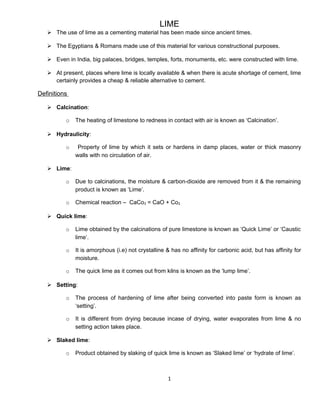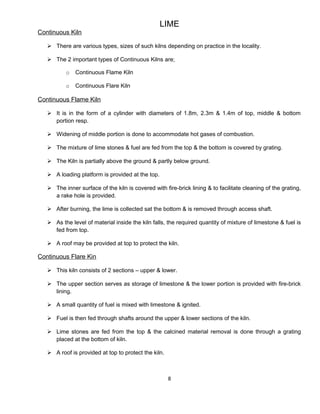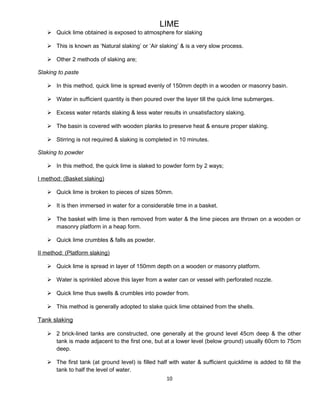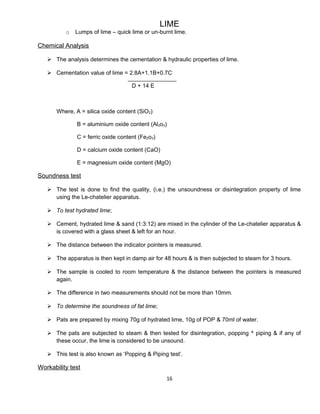The document provides a comprehensive overview of lime as a cementing material, detailing its historical use, definitions, types (quick lime, slaked lime, hydraulic lime), and manufacturing processes including calcination and slaking. It outlines the chemical reactions involved, the classification of lime based on composition, and the significance of various constituents in the properties of lime. Additionally, it describes the equipment used for lime production, such as clamps and kilns, and the importance of proper manufacturing techniques to ensure quality.


















